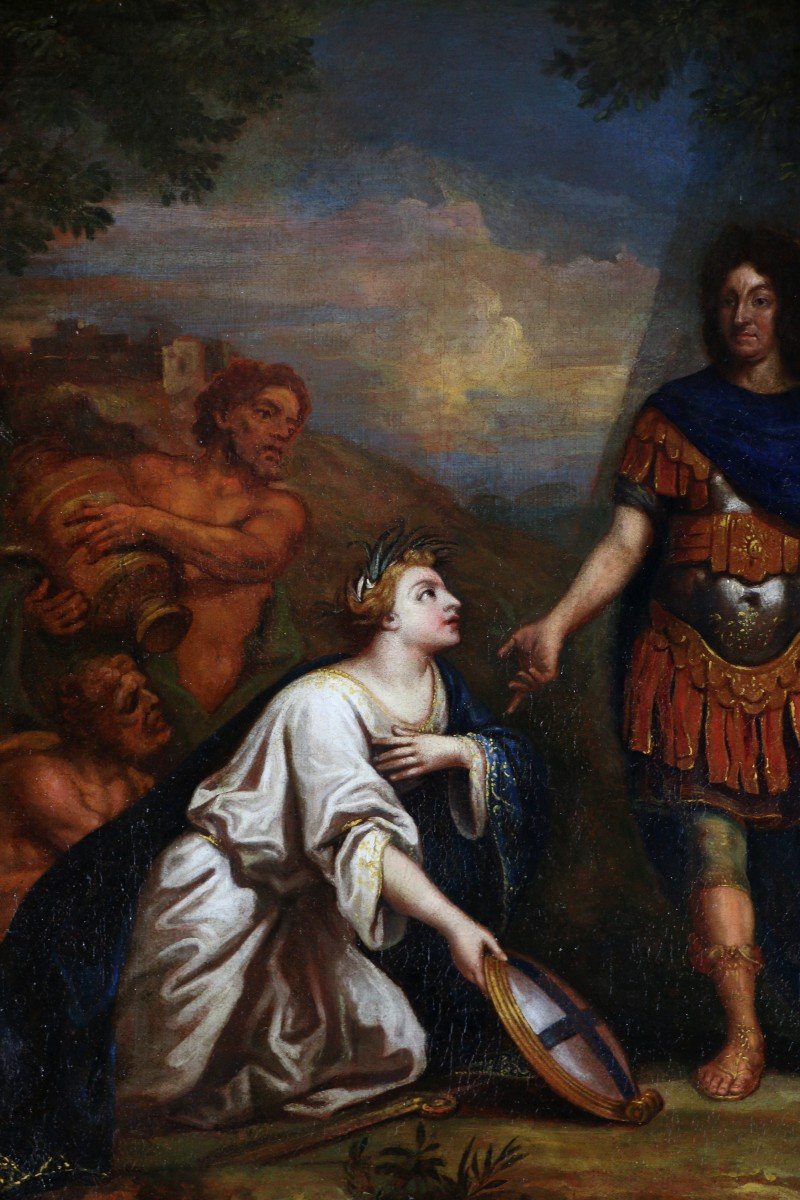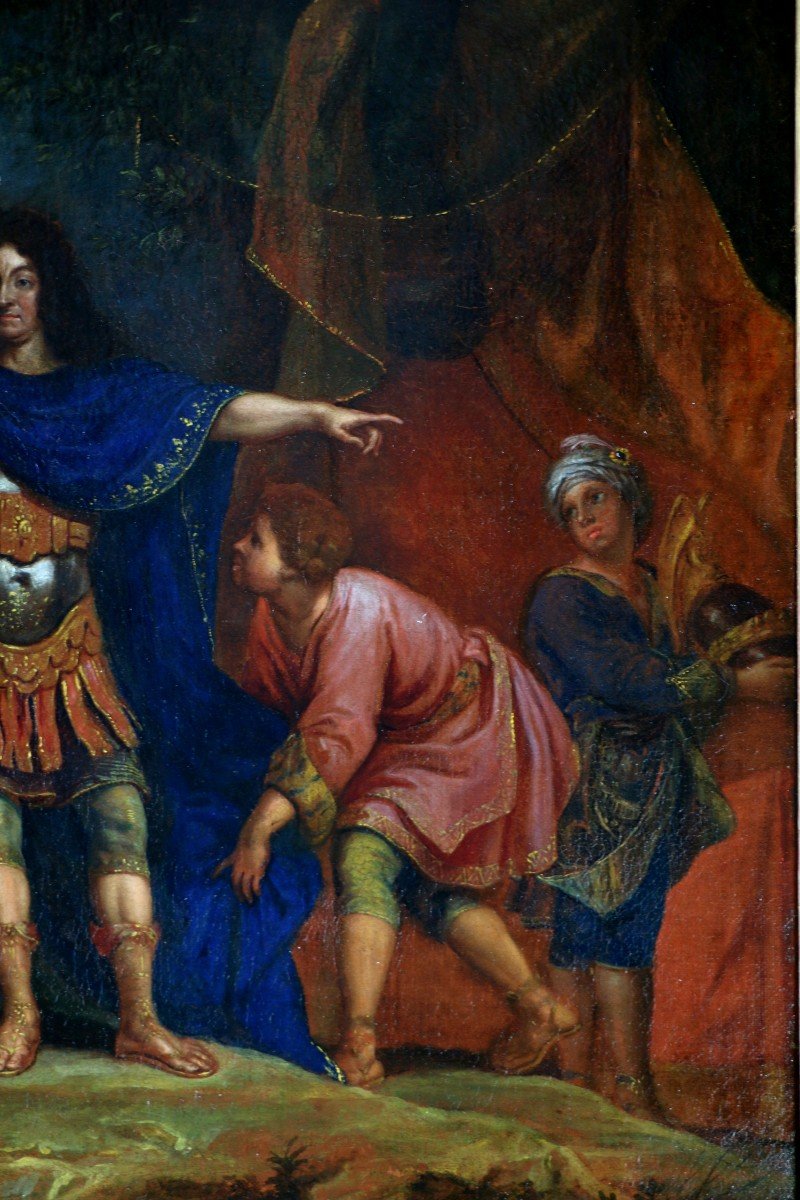Re-canvas of 71 cm by 57 cm
Superb old frame of 95 cm by 81 cm
In a sumptuous frame, a found work, the surrender of Marseille before Louis XIV in 1660. This work is attributed to Guy Louis Vernansal, student and then collaborator of Charles Lebrun before he took his own path. The influence of Lebrun is also obvious in this painting.
In 1660, Louis XIV, returning from the Spanish border where he had just signed the Treaty of the Pyrenees which established his victory over Spain, felt in a position of strength. He decided to go to Provence to have his authority recognized over Marseille, which at that time benefited from certain privileges, franchises and freedoms.
He sends his troops, 7,000 men, to occupy the city and prepare for his arrival. A royal decree of January 21, proclaimed with the sound of a trumpet, disarms the city: the inhabitants must lay down, under penalty of death, their individual weapons and their powder; the cannons are removed from the ramparts. The city is, in addition, hit with an extraordinary contribution of seven hundred and fifty thousand pounds.
On March 2, Louis Despite everything, De Pilles, the city viguier, accompanied by the city councilors, presents to the king the two golden keys that the city of Marseille is accustomed to offering in these circumstances, as a symbol of fidelity. The king refuses the keys.
The local nobility is excluded from consular functions and power is now in the hands of a viguier appointed by the king.
Vernansal Guy Louis (1648-1729)
A student of Charles Lebrun, he continues to work with and for his mentor in the Master's famous workshop. He notably participated in the creation of tapestry patterns for the Gobelins and Beauvais factories.
It was at this time that he most certainly painted our picture. Among his most important works from the end of the 17th century, we can cite the may of Notre Dame de Paris from 1688, Christ resurrecting the daughter of Jaire, today kept at the Museum of Fine Arts in Arras and another May, sadly lost: Christ and the Blind and Dumb Possessor of 1700.
In 1687, he was admitted to the Academy, where he became a professor in 1704.
He started traveling late in life. We find him in Bonn where he created, for the elector of Cologne, the design of the fresco which decorates the ceiling of the gallery of the palace of this city. From 1720 to 1722, he worked in Padua, where he created several paintings, and during a trip to Rome he created two other works representing the Madeleine (church of Notre-Dame-des-Miracles).
Among the artist's major works are also the Revocation of the Edict of Nantes, his reception painting at the Academy, which is now in the Versailles museum.
Let us also mention: Saint Bathilde sold to the mayor of the Archambault palace, becoming the wife of Clovis II, at the Orléans museum; finally, among his numerous paintings which adorn different churches in Padua: The Immaculate Conception; the crucified Christ detaching his arm from the cross to touch and heal a wound in Saint Pelieyrino Lariosi; the Nativity and the presentation of the Virgin; the Nativity of the Virgin {with the date 1720); the Nativity of Jesus Christ (1722); Flagellation; heaven ; Jesus Christ in the Garden of Olives.
In 1728, the portrait painter Pierre-Michel Le Bouteux painted his portrait. This painting, now in Versailles, is one of the pieces given by Le Bouteux for his reception at the Royal Academy of Painting and Sculpture.

















































 Le Magazine de PROANTIC
Le Magazine de PROANTIC TRÉSORS Magazine
TRÉSORS Magazine Rivista Artiquariato
Rivista Artiquariato